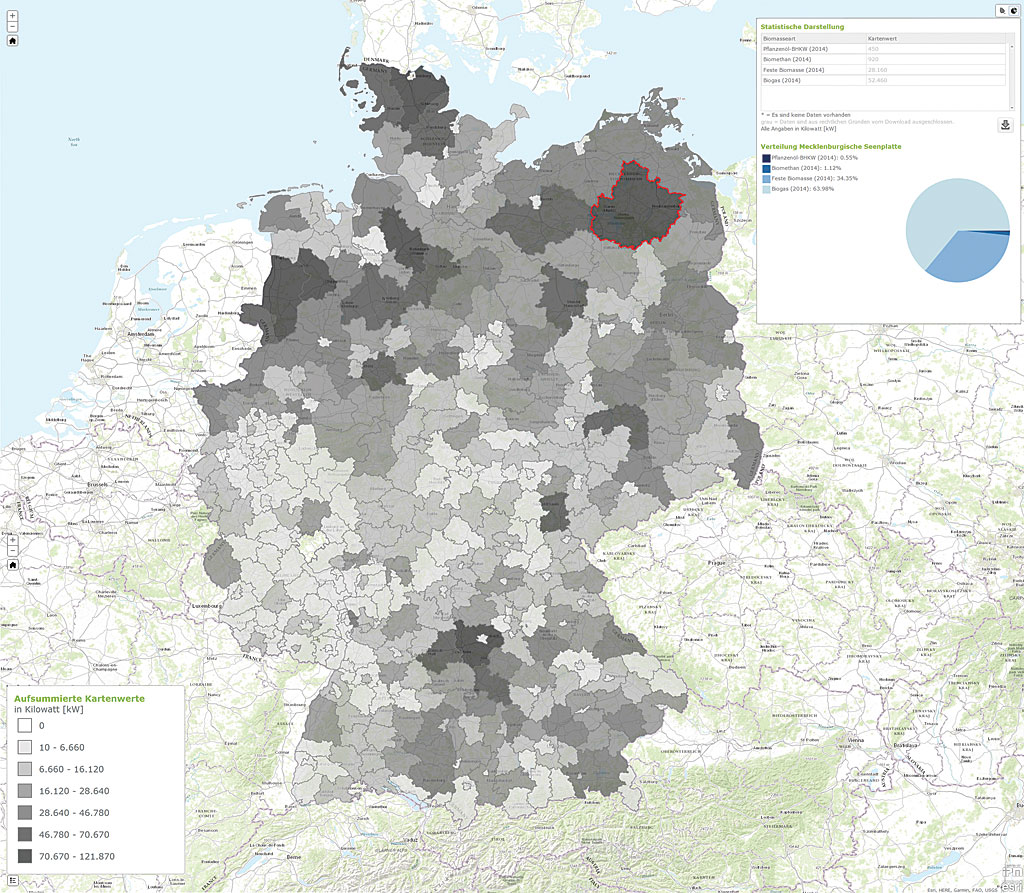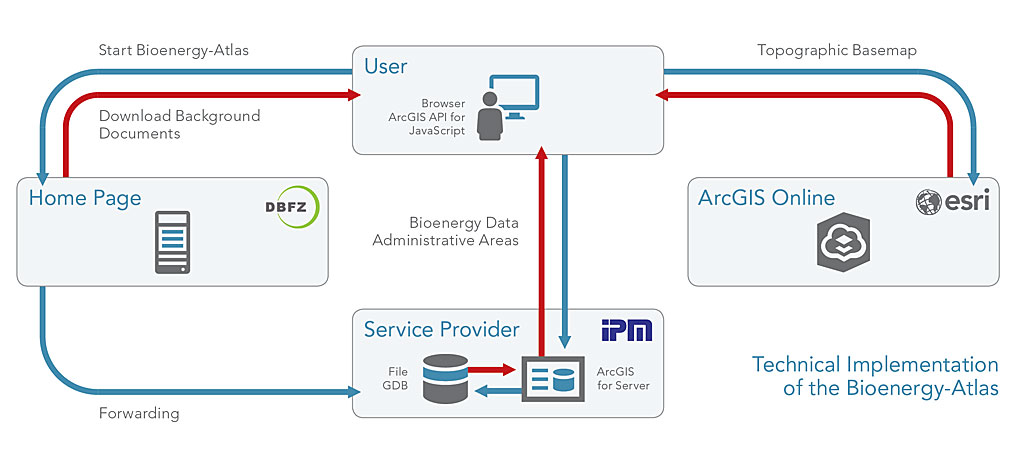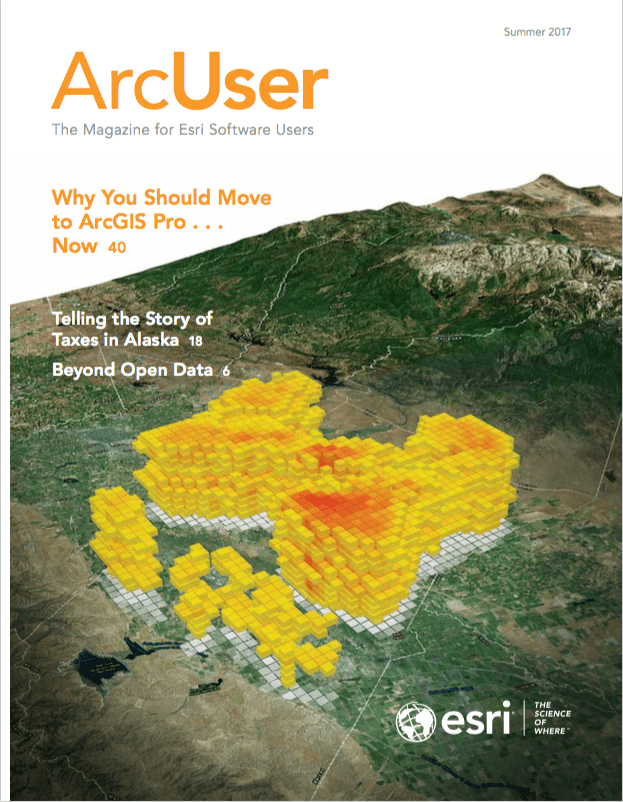An interactive atlas available to the public lets researchers, investors, and other interested stakeholders quickly and easily visualize biomass potential on national and regional levels in Germany.
The Bioenergy-Atlas, developed by the German biomass research institute Deutsches Biomasseforschungszentrum gGmbH (DBFZ) and Esri partner Ingenieurbüro Peter Müller GmbH (IPM), also makes the underlying data available for download in Microsoft Excel format for further research. The Bioenergy-Atlas is publicly accessible at https://www.dbfz.de/ at no charge.
An energy source that utilizes the energy contained in organic material, bioenergy is a renewable resource that specifically excludes energy derived from fossil fuels. Biomass is the term applied to organic material that is the source of bioenergy.

Because bioenergy contributes approximately two thirds to the renewable energy system in Germany, it represents an essential option for balancing the very volatile renewable energy sources that contribute to the German power supply system. A variety of biomass sources, especially those from the residual and waste material sector, offer great potential for optimizing the integrated use of this material as an energy source.

The database for calculating various biomass potentials used data from several research projects conducted by different research facilities in Germany. Data was collected in different ways to meet the needs of these projects. The data was furnished in Microsoft Excel spreadsheets. An import tool was written by IPM to import the table data into the ArcGIS Server database.
The database initially created was inconsistent because the original data differed in the classification of the biomass type, graduation of the units, scale of measurement, and administrative boundaries.
As part of a meta-study and in collaboration with several German scientific partners (Helmholtz Centre for Environmental Research, State Institute of Agriculture of Thuringia, INFRO, Bremen University of Applied Sciences, Witzenhausen-Institute, and Fachagentur Nachwachsende Rohstoffe [FNR], data on biogenous residual and waste material was collected and harmonized to make biomass sources comparable for future scientific research. The resultant data has been collected and made available through this high-performance and intuitive web app.
For the first time, the Bioenergy-Atlas enables users to assemble biomass potential results of various biomass sources. This tool makes information about technical biomass potential in tons of dry substance (t TS) accessible as well as the installed electrical capacity of bioenergy plants in kilowatts (kWs).
The data is organized by biomass topics and regions. Currently, information on the potential of 15 biomass categories can be displayed in an interactive map up to the county level. The content will be extended step-by-step. The integration of additional topics and functionalities is planned.
The interactive tool is also embedded in a wide range of online services that provide further information on the topic of biomass potentials. The website offers a continuously growing amount of new data. Illustrations, maps, data sheets, publication, tools, and state profiles are also constantly added to the DBFZ website. To supplement research papers and other publications, interested parties or institutions can obtain direct access to research results. By providing an extensive range of information services, DBFZ is a central contact point for the information on biomass potentials.
The Bioenergy-Atlas quickly provides users with specific biomass information. Interested users can immerse themselves in the fundamentals of bioenergy and contact DBFZ to answer any questions and contact others in the field to discuss findings and improve results.
Developed by IPM on ArcGIS for Server using the ArcGIS API for JavaScript (version 3.17), the atlas, which uses cloud components from IPM and Esri, is integrated into DBFZ’s home page. IPM hosts ArcGIS for Server and prepares the data on biomass potentials and the performance parameters of bioenergy plants in Germany. That data is delivered to the user’s browser, where it is rendered.
This design fulfills the customer’s requirement for a high-performance app that can work in low-bandwidth conditions. It is easy to use and does not require a manual. The Bioenergy-Atlas provides a high-quality visual representation of the data. It uses the Esri World Topographic Map from ArcGIS Online, so basemap content is automatically updated by Esri rather than requiring IPM to host and maintain the basemap.
ArcGIS for Server provides the atlas as a web service. The map shows administrative boundaries for country, state, and district. To accommodate differences in display quality and ensure results can be interpreted by users, color symbology has been optimized for interactive maps and charts.
For more information, please contact
André Brosowski of Deutsches Biomasseforschungszentrum gGmbH.
Adam-Ries-Straße 16
09456 Annaberg-Buchholz
Germany
Hubertus Kraus,
CEO of Ingenieurbüro Peter Müller GmbH

